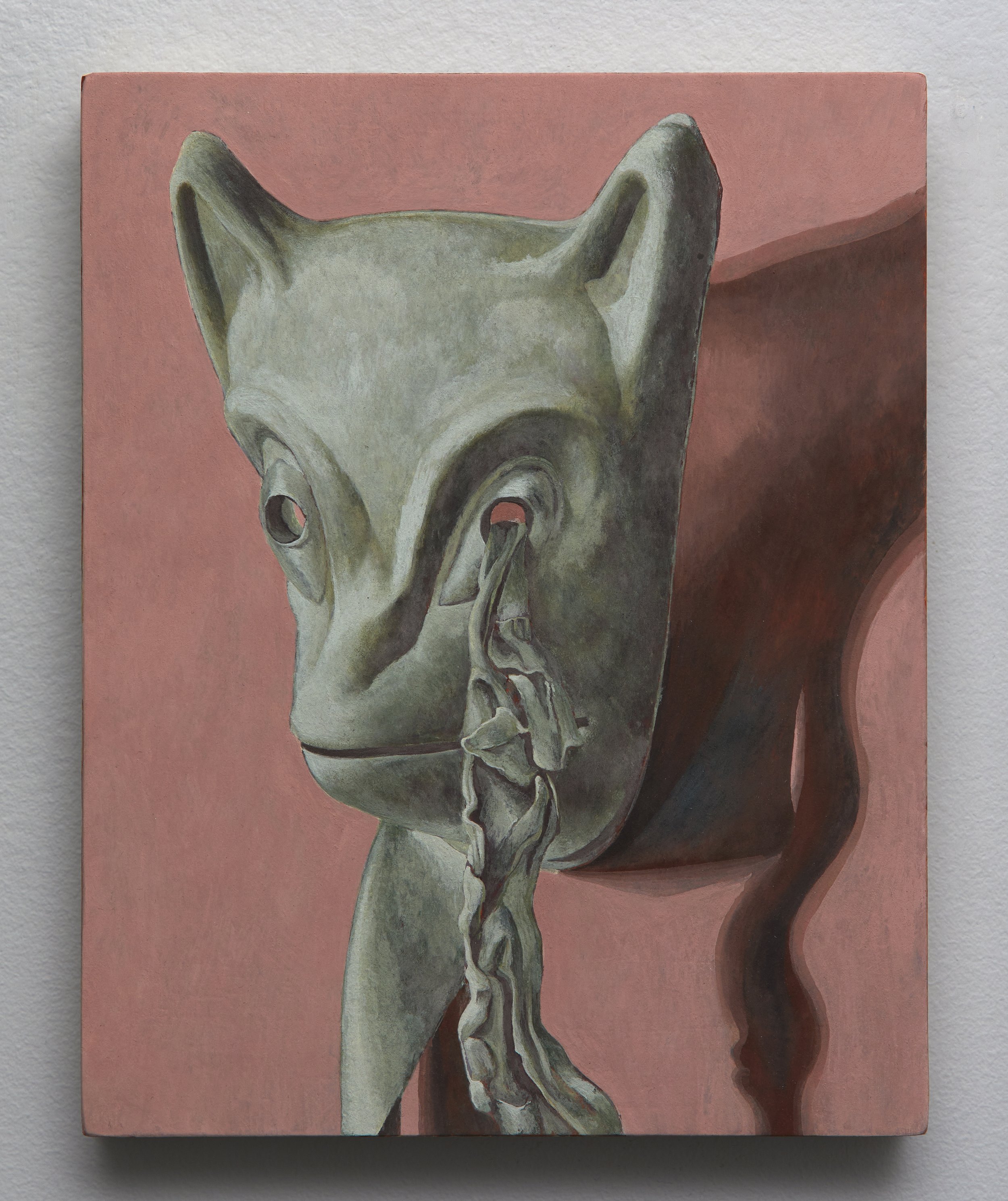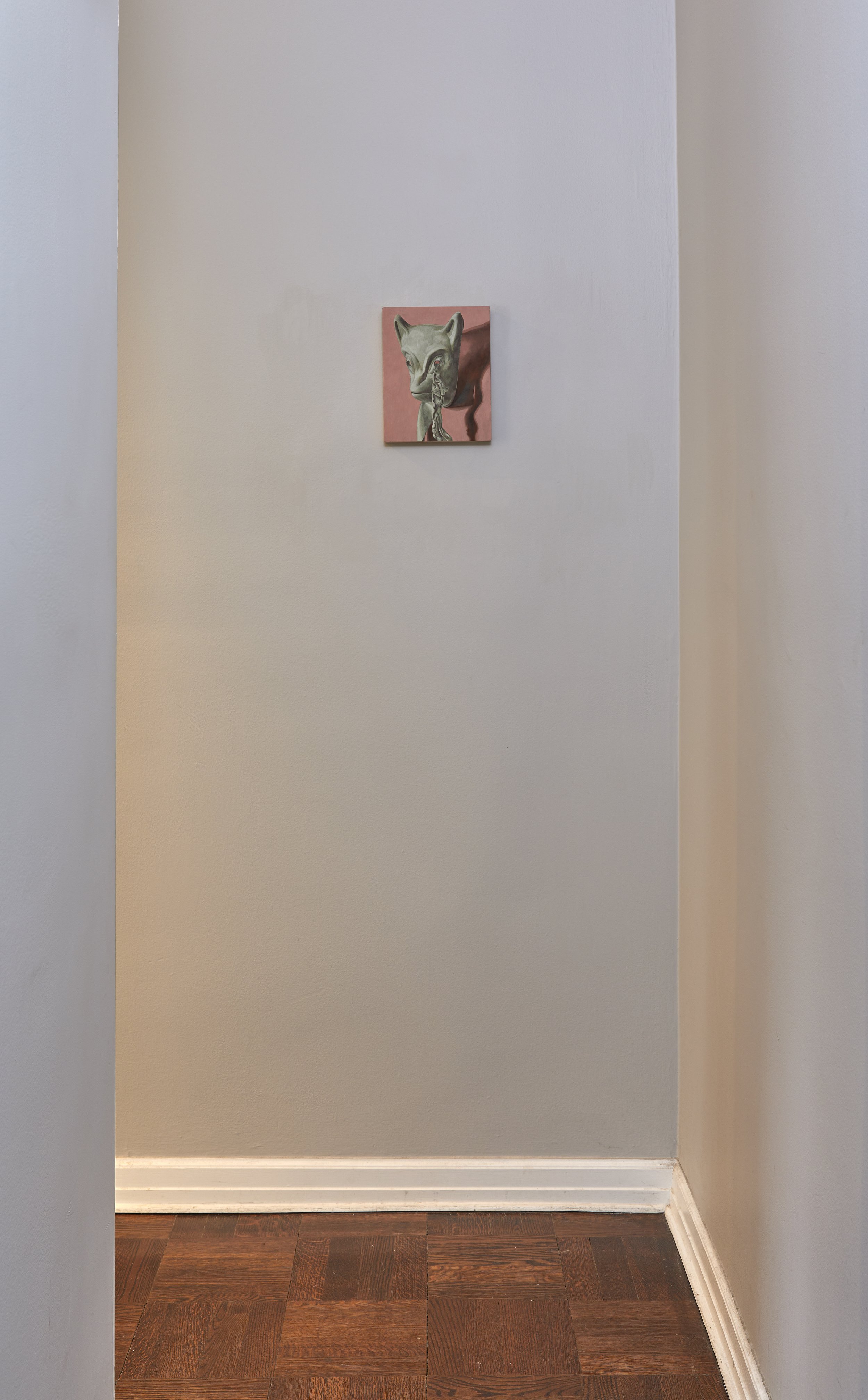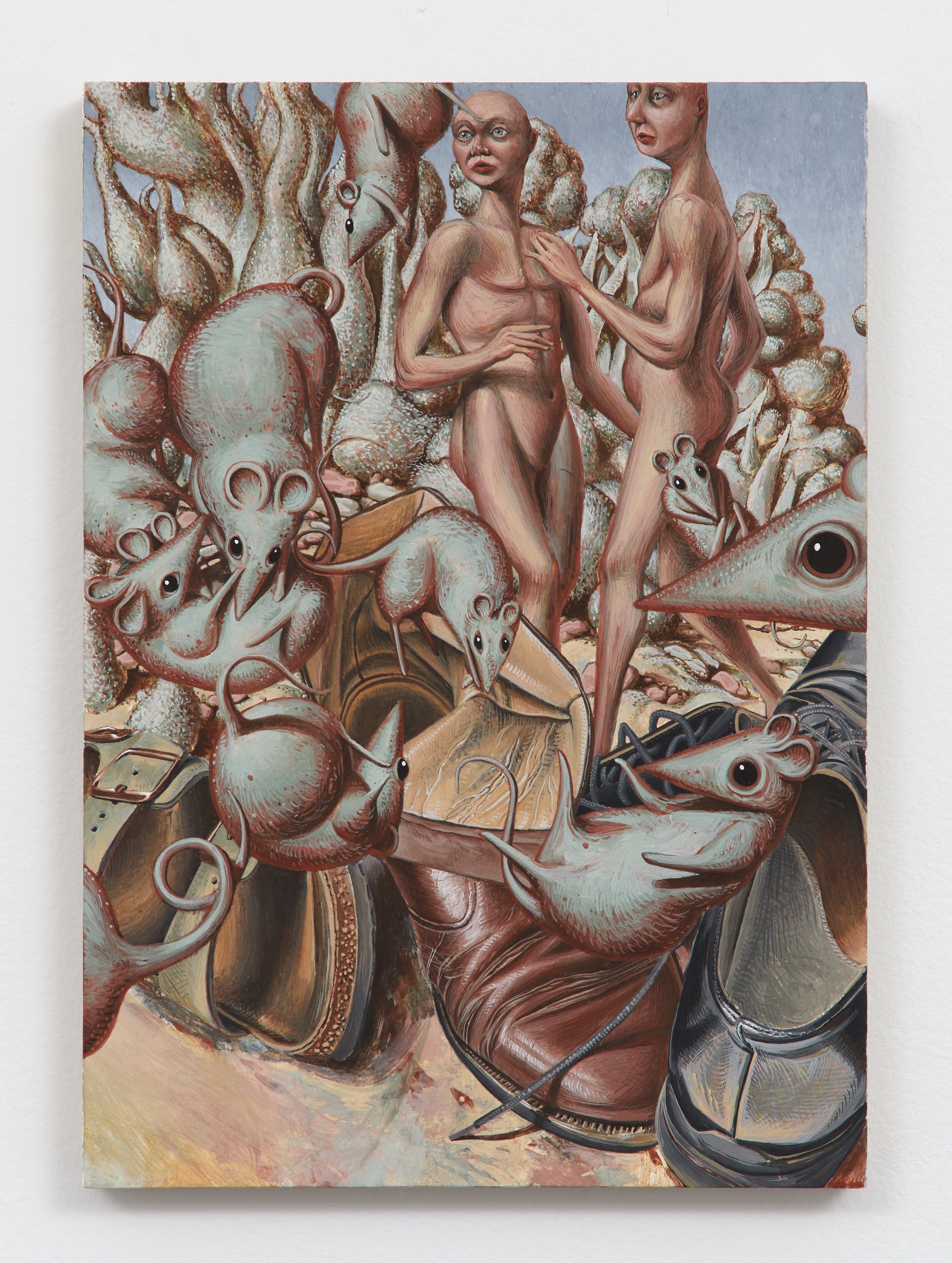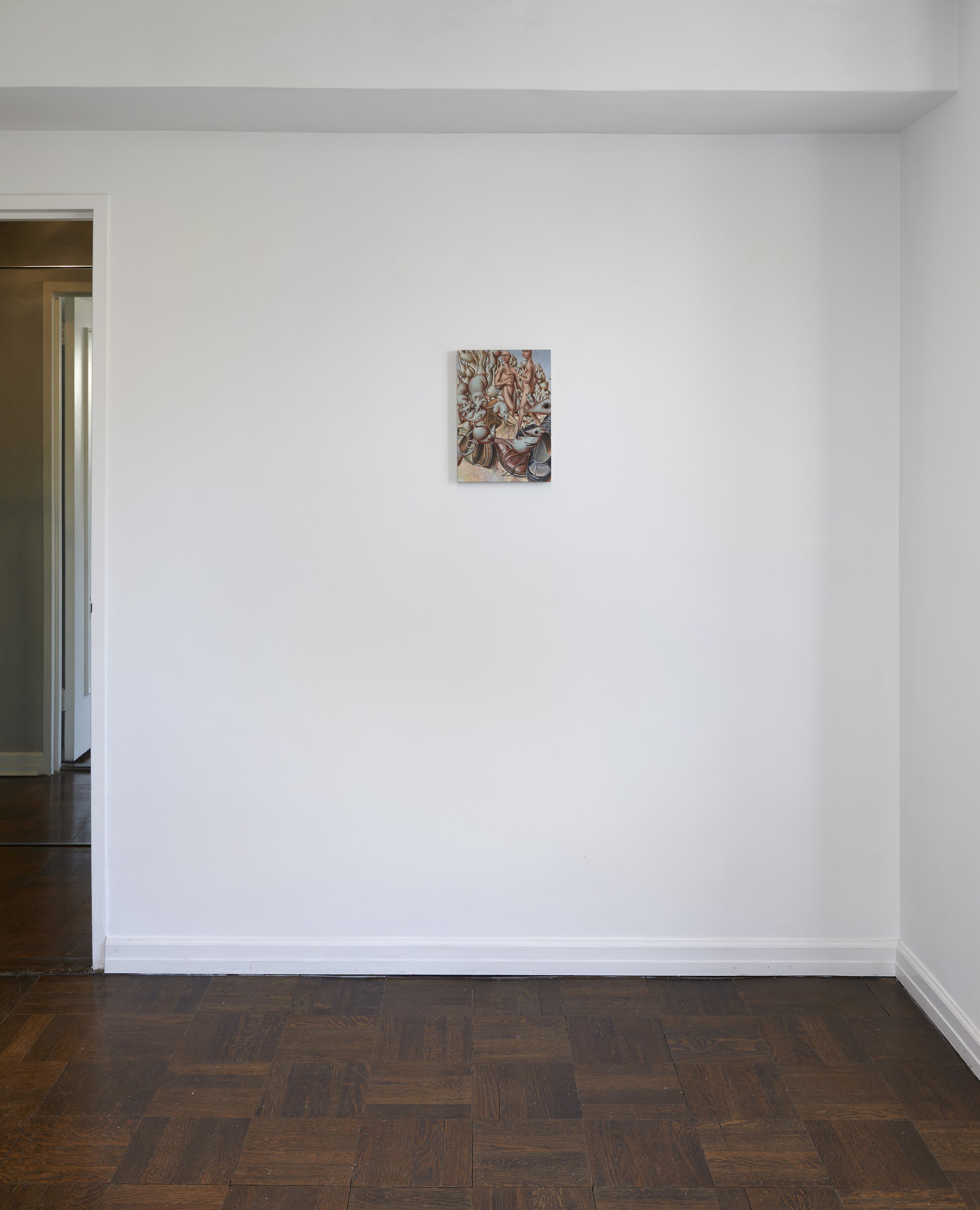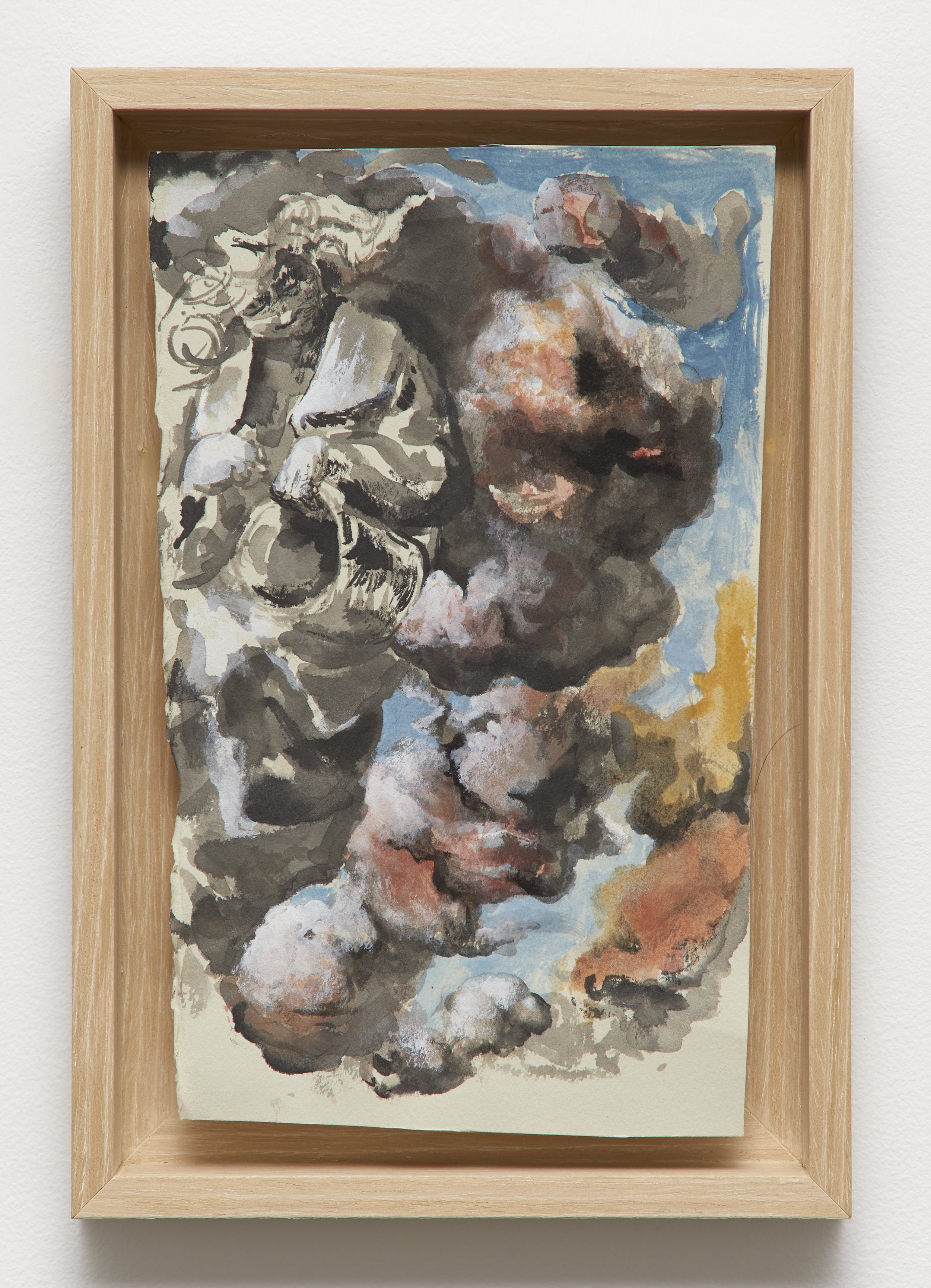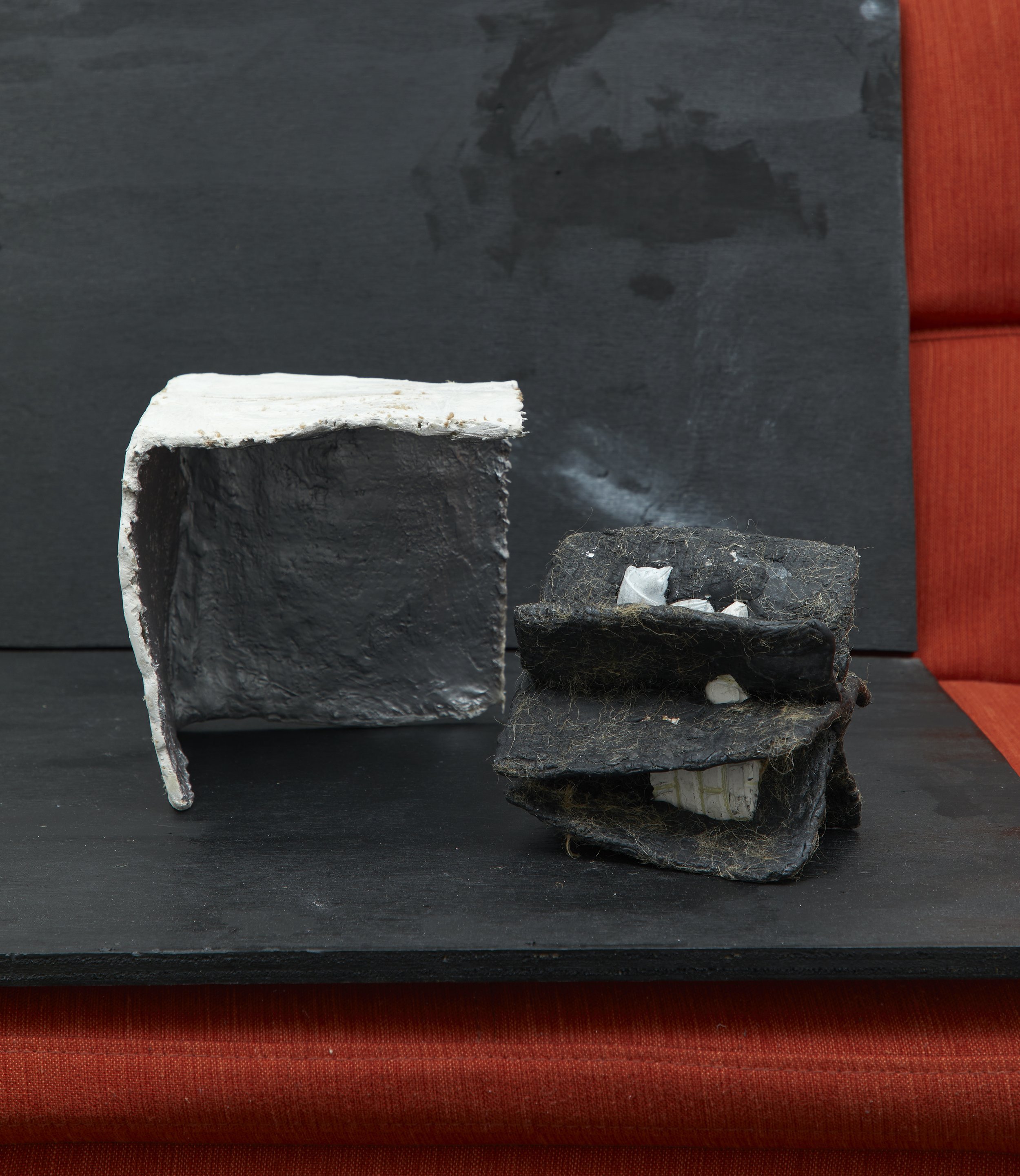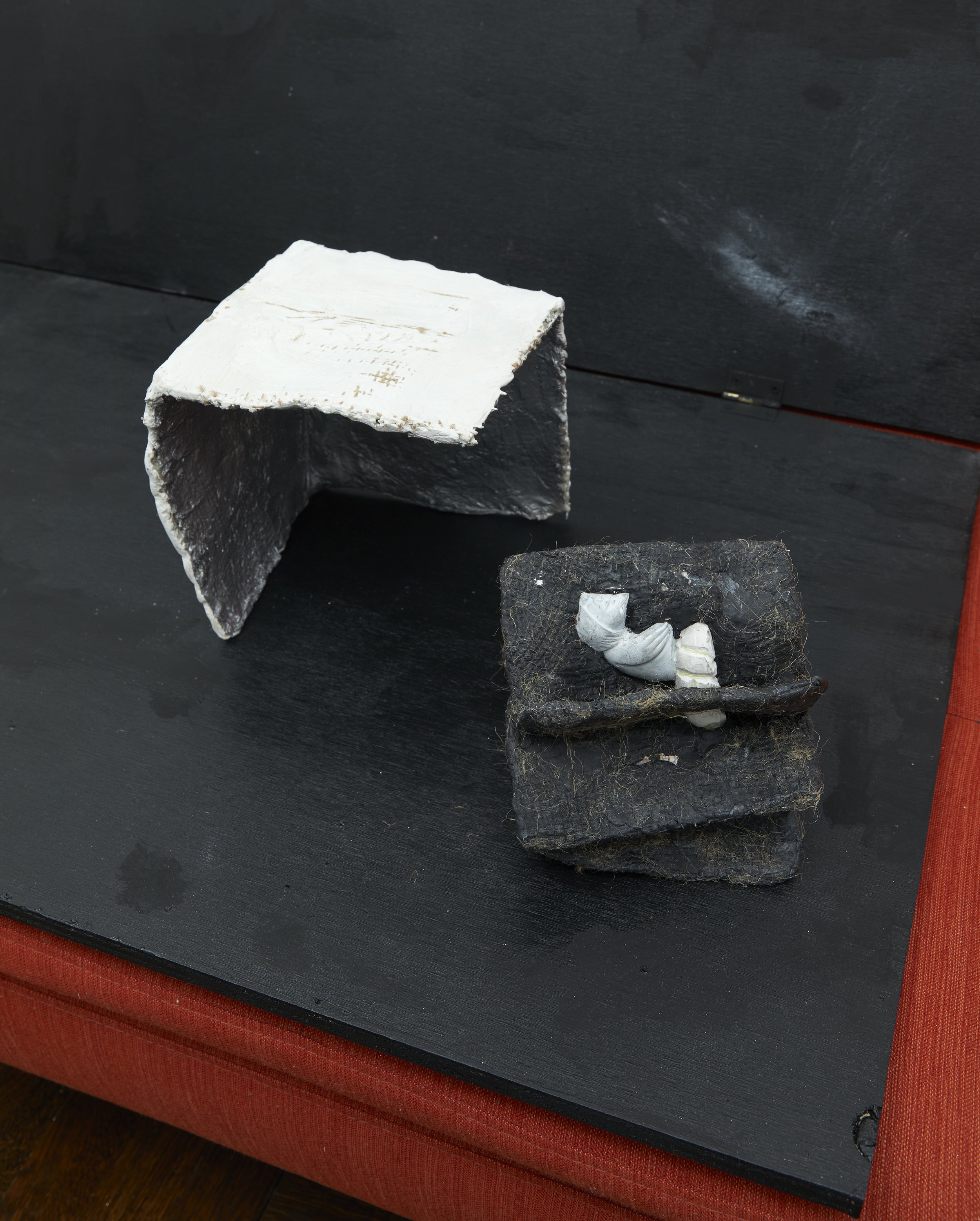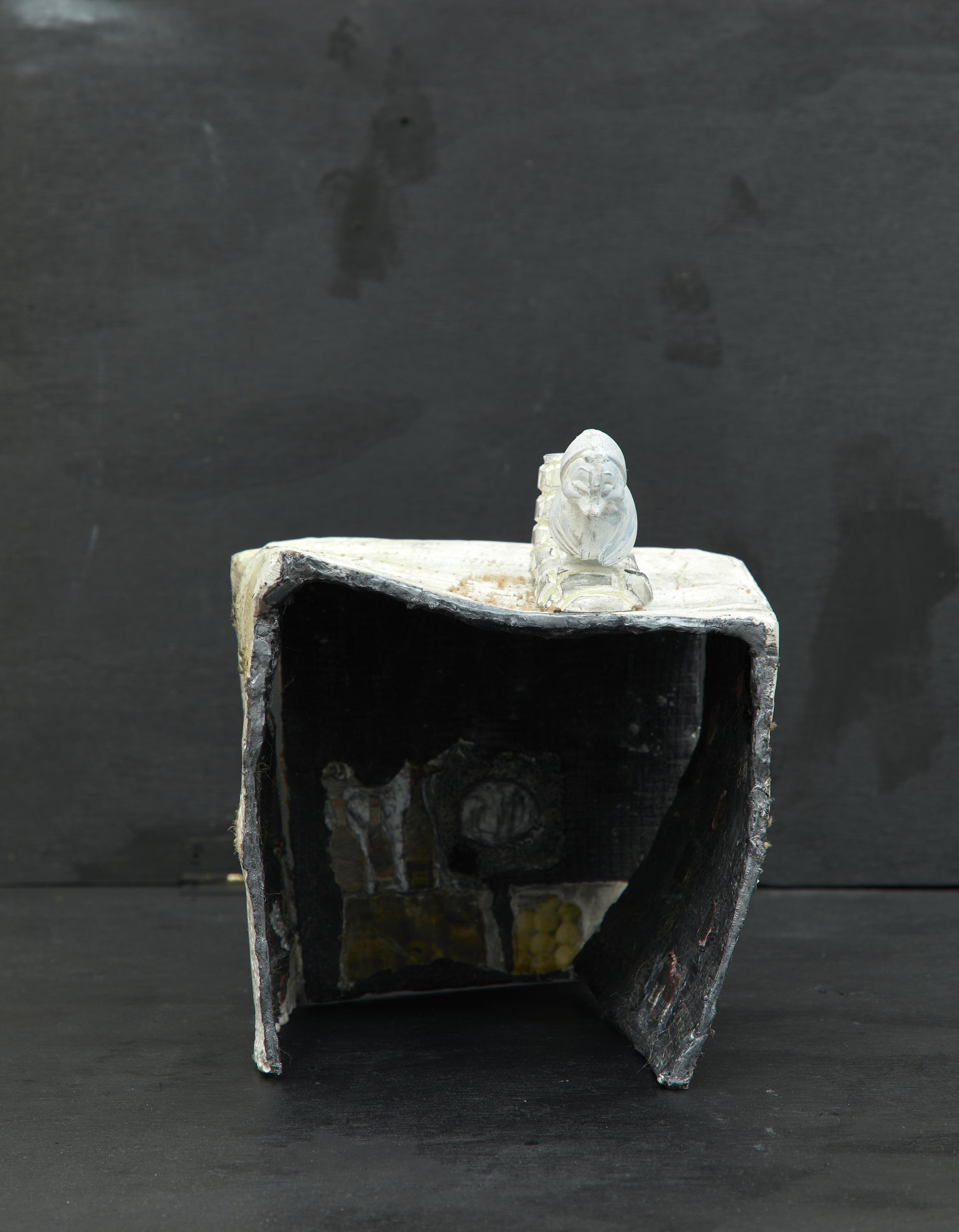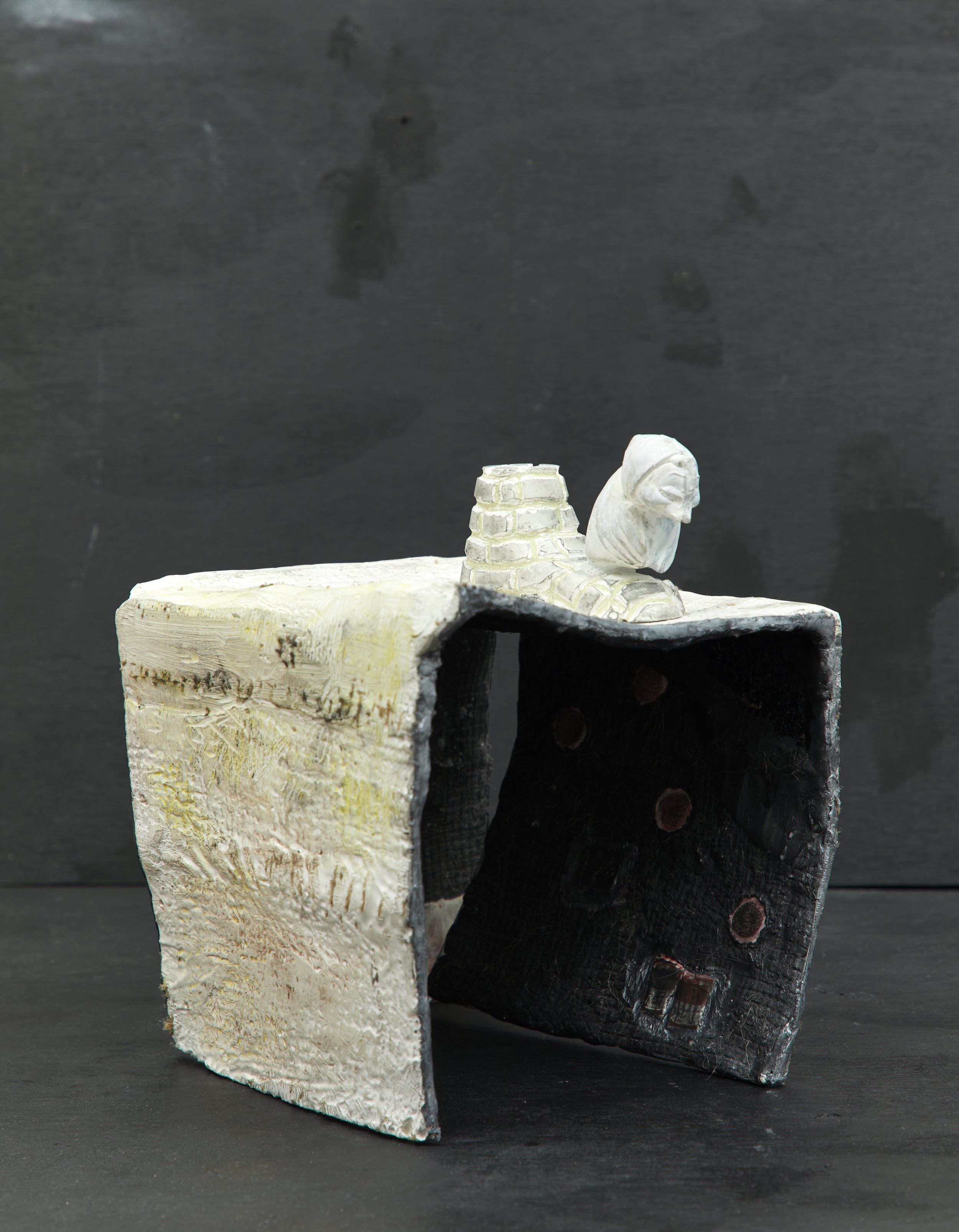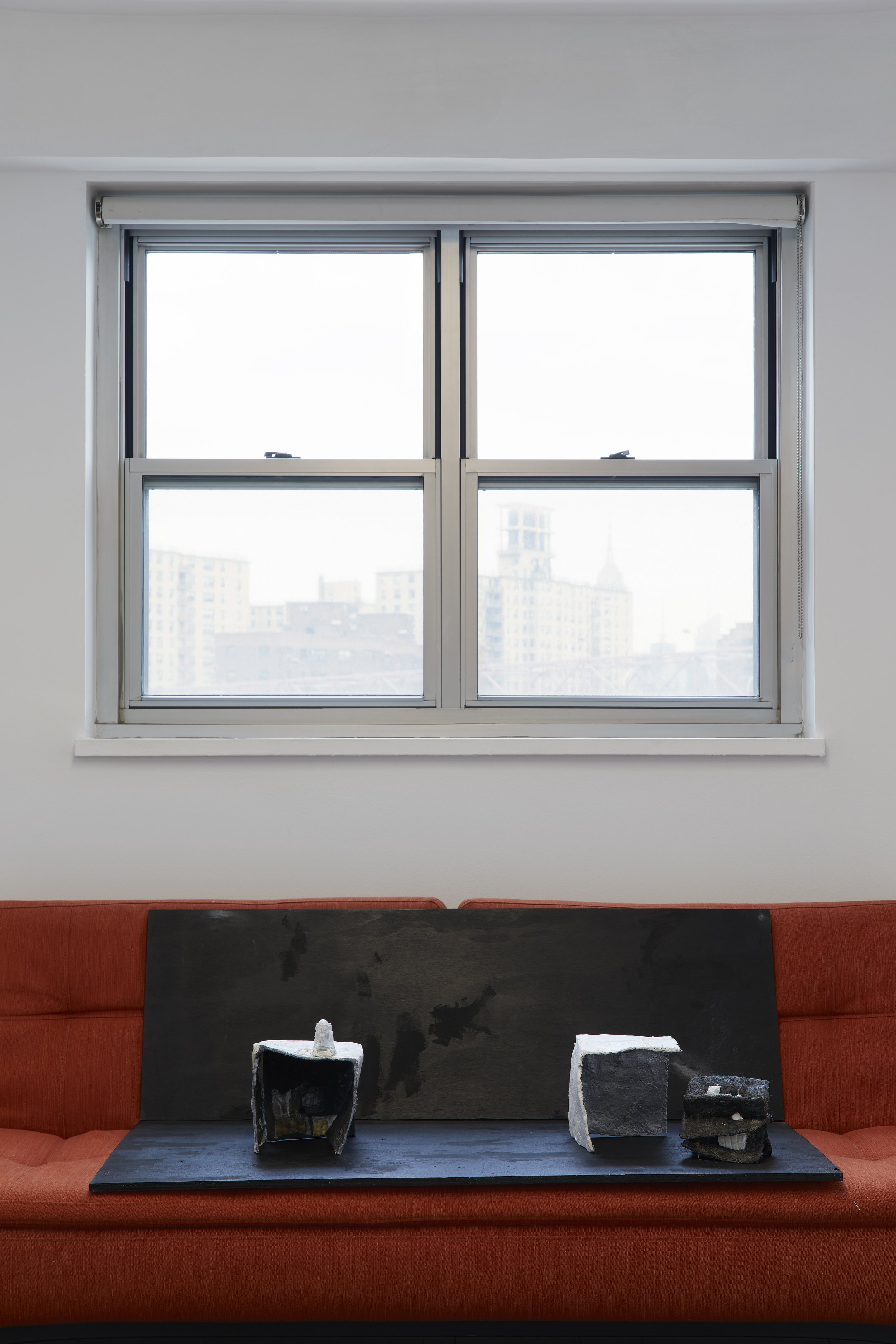Louis Reed
568 Grand St 10002
info@louisreed.nyc
Ann Green Kelly, Feliciano Pop, and Jannis Marwitz
Elizabeth Costello
April 23 – May 23 2023
“Belief may be no more … than a … battery which one clips into an idea to make it run.” — Elizabeth Costello
A belief, by its nature, is not an objective fact. An artist’s practice is a special engine, run on uncertainty. What is jet fuel for the inorganic processor, is poison for the artist: facts, proofs, and formulas.
The beliefs of the artists in Elizabeth Costello are the anodes and cathodes between which their energy is released. Unlike, lithium-ion batteries, no one can explain or recreate the process by which they generate power.
Entering the exhibition we are greeted with Ann Green Kelly’s relentless focus on making objects and placing them in space, both aesthetically and conceptually. Setting her sculptures atop the couch (two lair-like spaces, homes for hybrid sphinxes with the head of a bird and a shoe for a body), she found the place in the room where we are drawn. Yet, being unable to completely understand her sculptures, one lingers, absorbed by what we can’t know. One enclosure could be a den for a mouse looking for the best deal on produce. The second, a more minimalist home, has a hairy asterisk wrapped around a sphinx parked outside: a vehicle ready to speed away.
Across from the couch, sit Feliciano Pop’s sculptures carved from the pumice stone of his hometown, San Pedro La Laguna near Lake Atitlan in Guatemala. Born in 1929, Pop has been carving his sculptures by hand since the 1950’s. The four objects on display speak to the two poles of belief in his life, Catholic faith and a commitment to his largely indigenous community. The juxtaposition of saints with miniature grindstones speaks of tension inside him and of the Maya, whose lives and religion depended upon corn for millennia, but whose spiritual focus was later grafted forcibly onto Catholicism.
Three paintings by Jannis Marwitz frame the exhibition. Apparent upon first glance, and persisting long after leaving the works’ presence, is Marwitz’s deep belief in the value of technique and tradition in painting. Just as evident is his conviction that copying old masters is of no interest. Mice rendered in tempera fall in front of an alienlike couple, with flora that most closely matches that of the Socotra Archipelago. An enchanted tree trunk and Noh theater mask inhabit his other two paintings. Belief and interest in such a wide world, anchored in a faith in painting, is both rare and captivating.
Each artist gives us works whose innerworkings we will never fully comprehend, but accepting their beliefs without having to understand them, allows our own machines of appreciation to start.
